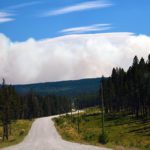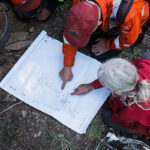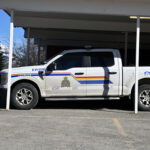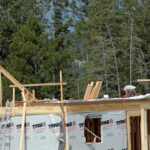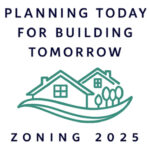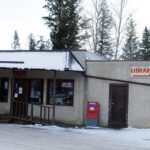Home »

Family impacted by lung cancer urges others to reduce cancer risk
November is Lung Cancer Awareness Month and a family personally affected by lung cancer is joining forces with health advocates to encourage Southern Interior residents to make testing their homes for radon gas a top priority.
Radon exposure is the second leading cause of lung cancer after smoking and has been found in high concentrations in the Southern Interior Region of BC.

Dana Schmidt’s wife, Donna Schmidt, passed away in 2009 from lung cancer. The Schmidt family lives in Castlegar, a community with one of the highest rates of radon gas in the province. Since his wife’s passing, Schmidt has been on a personal quest to reduce radon exposure through education and prevention in Castlegar and throughout the region through the establishment of the Donna Schmidt Lung Cancer Prevention Society.
Through this society, Dana distributes hundreds of radon gas test kits to the people of Castlegar and surrounding communities and gathers the results of these tests to provide data on the extent of the issue of radon gas.
According to Schmidt, “My wife, who quit smoking about 20 years before her death from lung cancer, had a significantly increased risk of getting lung cancer because of the high radon levels in our home. Her exposure to radon in our home increased her odds of getting lung cancer as if she had never quit smoking. When it comes to lung cancer, because early detection is so difficult, prevention is very important. I don’t want others to suffer the same consequences we did because of a lack of awareness about radon.”
Schmidt adds, “I’ve been focusing on educating people about testing the levels of radon gas in their homes and showing them what they can do to bring the levels down as I have done in my own home and my company has done in my office where I work. We know that across the Kootenay and Interior regions, workplaces as well as new homes can also have high radon levels.
“Surprisingly, some of the highest levels measured in Castlegar were in more newly built homes so it’s really important for everyone – from homeowners to homebuilders in the industry, to be aware of radon. It is possible to reduce radon in new homes through design and construction for an increased cost of only several hundred dollars. Likewise, older homes that test high for radon can be addressed by working with a radon mitigation specialist. Radon is a very serious issue but it’s an issue we can do something about. We can save lives in British Columbia by testing for and reducing exposure to radon.”
“The Schmidt’s story illustrates how important it is to have your home tested for radon and how easy it can be to reduce cancer risk,” says Patti King, Team Lead of Health Promotion with the Canadian Cancer Society, BC and Yukon. “Radon is a naturally occurring, colourless, odourless gas that can build up in people’s homes. We need to be aware of it so we can take action. Fall and winter are a key time of year to test your home. With summer coming to an end, this means often closing windows and spending more time indoors, which can increase the risk of radon exposure.”
Health Canada estimates that 16 per cent of lung cancer deaths in Canada are caused by radon and that an estimated 500,000 Canadians are living in homes that exceed the federal guidelines of 200 Bq/m3 for radon exposure. The risk of developing lung cancer depends on how much radon a person is exposed to, how long they are exposed as well as whether or not they smoke.
“High radon concentrations have been detected in homes across the country and the Interior Region of BC is no exception,” says Dr. Mark Lysyshyn, Public Health Physician with Interior Health. “Radon occurs as a result of the natural decay of uranium in rocks and soil. The only way to know if your home has high radon levels is to test it. If radon testing indicates high levels in a home measures can be taken to lower the radon levels.”
To obtain a test kit, homeowners can contact the BC Lung Association at 1-800-665-LUNG (5864). The kits cost $30 and come with information about how to perform the test. Alternatively, radon test devices may also be available at local hardware stores. Prices and types can vary.
In B.C., an estimated 3,000 new lung cancer cases are expected for 2013 and 2,400 lung cancer deaths are expected. Lung cancer remains the leading cause of cancer death for both men and women and takes the lives of more Canadians than breast, prostate and colorectal cancers combined.
For more information about the Donna Schmidt Lung Cancer Prevention Society visit ddschmidt.shawwebspace.ca. For more information about radon and to access a list of certified radon mitigation specialists visit myonething.ca.
Canadian Cancer Society, B.C. and Yukon
